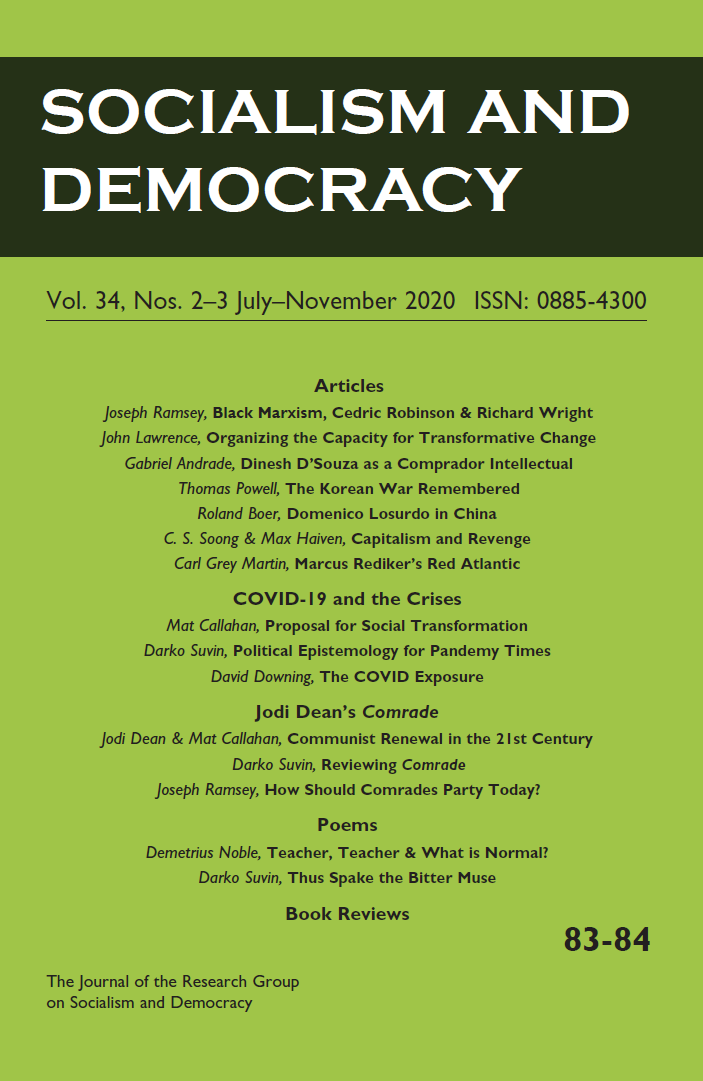Jamie Longazel, Undocumented Fears: Immigration and the Politics of Divide and Conquer in Hazleton, Pennsylvania. Philadelphia: Temple University Press, 2016. 204 pp. paper $27.95.
This excellent study analyzes important dynamics behind the current anti-immigrant backlash, particularly as it has been manifested in legislation on the state and local levels. Even though aimed at undocumented residents, these laws are the most visible manifestation of a more general pattern of increased stereotyping and discrimination aimed at immigrants, in this case Latinos. Even though written before the 2016 presidential campaign, it portrays a scenario strikingly similar to candidate Donald Trump’s appeal to some historically Democratic constituencies.
Jamie Longazel’s study is of the Illegal Immigration Relief Act (IIRA) passed in 2006 by the city of Hazleton, Pennsylvania. It was the first of such acts passed by municipalities and served as a model for subsequent legislation by some other cities and most notably state laws in Arizona (SB 1070), Alabama and Georgia. The IIRA stipulated penalties for renting to or hiring undocumented immigrants, threatened suspension of licenses for businesses that did so, and declared English Hazleton's official language. Although subsequently declared unconstitutional and the penalties never implemented, Longazel goes far beyond the law itself by examining the rhetoric and ideology that produced the law and the consequences for Latinos whatever their citizenship and immigration statuses, as well as rather successful ongoing efforts to better incorporate and integrate Latinos who were alienated and victimized by the law’s passage.
Hazleton represents a microcosm of similar small and medium-sized metropolitan areas that have experienced substantial losses of better-paying working-class jobs. Hazleton is in a former coal mining region that attracted European immigrants (Irish, Slovak, Polish, Italian, etc.). After the mines began to close in the 1950s, an industrial park was built that attracted factories. However, these started to close in the 1990s. In response, a local development organization, CAN DO, was formed, initially to bring good-paying jobs back to Hazleton. But, as Longazel writes, the organization subsequently adopted a neoliberal approach by seeking tax incentives to attract low-wage industries, most notably a Cargill meat processing and distribution plant. This and similar plants attracted large numbers of Latinos. These included many Dominicans living in New York and New Jersey as well as other immigrants, particularly those originally from Mexico and Peru.
At the same time, wages and living situations of working-class non-Hispanic whites continued to stagnant, and many left the area. This was the perfect scenario for scapegoating and political opportunism. Hazleton’s Republican mayor Lou Bartella spearheaded the passage of the IIRA. As analyzed by Longazel, he and others utilized what Leo Chavez has termed the “Latino Threat Narrative” in which Latinos are characterized as not being like previous immigrants who became well assimilated but rather as dangerous, part of an invading force and having overwhelmingly negative impacts on their new communities and the nation as a whole1.
The catalytic event stimulating IIRA was the arrests of two undocumented Dominicans for the murder of a long-time Hazleton resident. The local media devoted far more attention to this than to another homicide of a Dominican resident half a year earlier. Longazel argues that this strengthened the perceived immigrant-crime nexus. He presents statistics that the crime rate in Hazleton did not increase as a result of the influx of immigrants; of the 8571 arrests in Hazleton between 1997 and 2006 (the year of the law’s passage), only 21 were undocumented (0.25%). In fact, charges were dropped against the arrested Dominicans who were subsequently deported.
The book’s subtitle “politics of divide and conquer” captures much of Longazel’s analysis. In this sense, Hazleton was a precursor to Donald Trump’s divisive presidential campaign and his appeal to many non-Hispanic white working class voters. Blaming the city’s fate on immigrants detracts attentions from structural sources of increasing inequality, such as the impacts of economic globalization and neoliberal policies. And it makes virtually impossible alliances among working-class populations from different ethnicities. As Longazel illustrates, knowledge of and lessons from the past are ignored or forgotten, as stereotyping, scapegoating and bigotry aimed at newcomers take precedence. One of the many virtues of the book is its examination of Hazleton’s past where different ethnic groups among coal miners were often pitted against one another as management strategies to keep wages low and miners unorganized, something often accomplished with the cooperation of the miners themselves who were all too willing to believe people of different national backgrounds represented threats to their well-being. Ironically, both of Mayor Barletta’s parents were of Italian descent, and Italian miners were often scapegoated and marginalized, similar to the consequences for Latinos by the rhetoric surrounding IIRA2.
Besides archival research, Longazel uses interviews and focus groups of both Latinos and non-Hispanic whites conducted between 2007 and 2013 to probe the depth of the reactions to the Latino Threat Narrative rhetoric and the consequences of the passage and subsequent unconstitutionality of IIRA. His study follows Michael Buroway’s conception of “the extended case method.” Longazel grew up in Hazleton, and ongoing connections facilitated his research. He remains active there, e.g. co-founding Anthracite Unite (www.AnthraciteUnite.com).
Longazel probed the ideology behind the scapegoating. Using quotes from interviews and other sources, he focuses on the promotion of a mythical past of an innocent small town and the IIRA as a defender of it against those (immigrants) that would defile it. Affirmation of this myth and the degradation of Latinos are part of the same process. Longazel writes that the embrace of a hard-working, virtuous, innocent, etc. identity by many non-Hispanic working class whites is dependent on the degradation of the “alien other”. As he points out, perpetuating this fable is dependent on creating what Eduardo Bonilla-Silva calls “racial story lines” or “racial testimonies”3.
Many Hazleton Latinos told him they experienced increased harassment and discrimination after the law was passed. Longazel titles this section “Licensed to Hate” (pp.40-42), and it is very similar to immigrant and refugee experiences following Trump’s election.
This and so many of his findings and analysis are widely applicable and can be applied to understanding current political mobilizations and experiences of immigrants and refugees. Another of these is the attempts by Hazleton residents, both Latinos and non-Hispanic whites, to counter the marginalizing impact of IIRA. Longazel covers several initiatives, and was a participant observer for one, that attempt to unite residents across ethnic lines and facilitate the integration of newcomers into the larger community and its institutions. Notable among these is the Hazleton Integration Project (HIP) which grew out of another initiative and became an umbrella for similar projects. Founded in 2011 by a Hazleton home-town hero, major league manager Joe Maddon who at that time managed the Tampa Bay Rays before moving to the Chicago Cubs. HIP converted a former Catholic school into its headquarters and a community center. The mission of the Center is to be a place “where economically disadvantaged children can participate in a wide variety of free or affordable educational, cultural and athletic activities” (p.75). The Center’s many projects and activities emphasize multiculturalism and building interpersonal relations. These and others illustrate how initiatives build on one another.
The book has already received the 2017 Scholarly Achievement Award of the North Central Sociological Association.
While a department colleague of mine at the University of Dayton, Longazel testified at a 2011 City of Dayton Commission meeting in support of an initiative to make Dayton an “immigrant friendly city”, contrasting Dayton’s efforts with the divisiveness that resulted from Hazleton’s law4.
The book has a nonconventional style in that the notes take up almost as many pages (73) as the text (98). Notes are used to further develop topics, ideas and theoretical concepts that might otherwise make reading the book cumbersome for some readers if many notes were instead part of the text. Longazel did this to make his book accessible to a wide range of readers. The text of the IIRA and notes on methodology and data are in the appendices.
Undocumented Fears joins a growing number of scholarly works that illustrate the basic racist and irrational nature of so many recent anti-immigrant initiatives and how most yield counterproductive results. It is highly recommended and quite accessible for college students.
Theo Majka
Department of Sociology, Anthropology and Social Work
University of Dayton
Dayton, OH
tmajka1@udayton.edu
Notes
-
Leo Chavez, The Latino Threat: Constructing Immigrants, Citizens and the Nation. Stanford University Press. 2nd edition 2013.
-
Barletta used similar anti-immigrant rhetoric to win election in 2010 to the U.S. House of Representatives from Pennsylvania’s 11th Congressional District which encompasses Hazleton. In August 2017 and with the support of President Trump, Barletta announced his challenge Pennsylvania’s incumbent Democratic senator Bob Casey in 2018. Although defeated, nonetheless he received 42% of the vote.
-
Eduardo Bonilla-Silva, Racism without Racists: Color-Blind Racism and the Persistence of Racial Inequality in the United States. Rowman and Littlefield. 2nd edition 2006.
-
In fall 2017 Longazel became an associate professor in the Department of Political Science at John Jay College of Criminal Justice, City University of New York.

